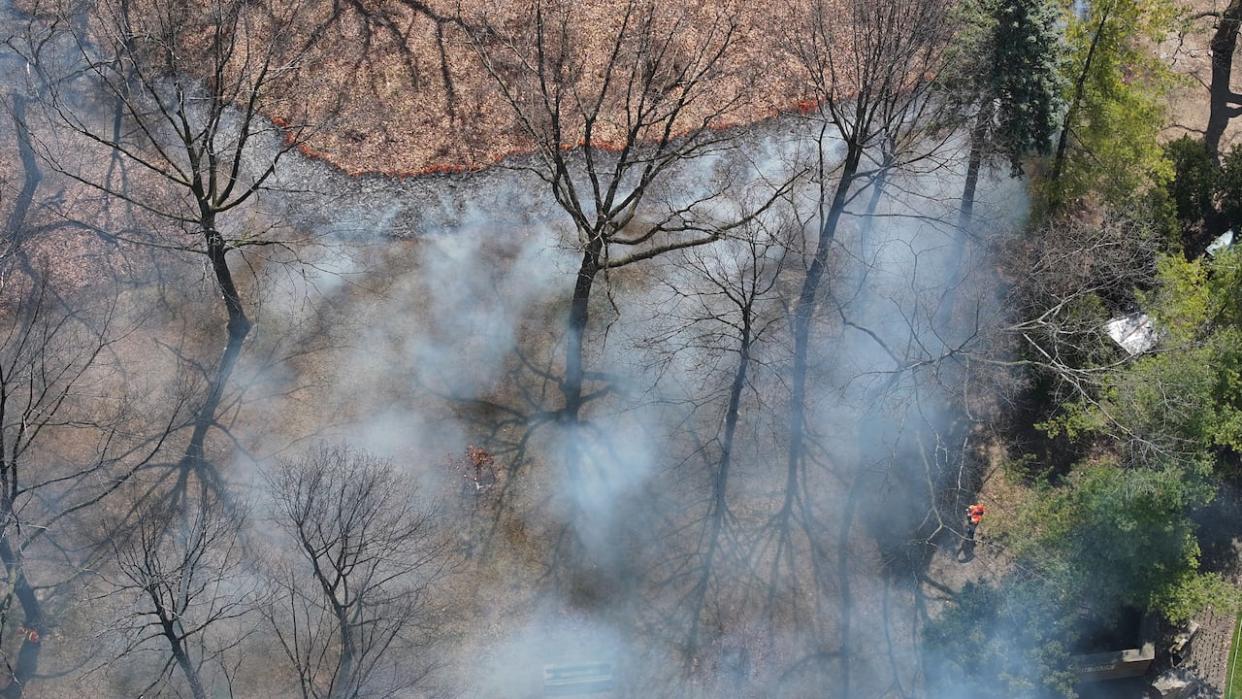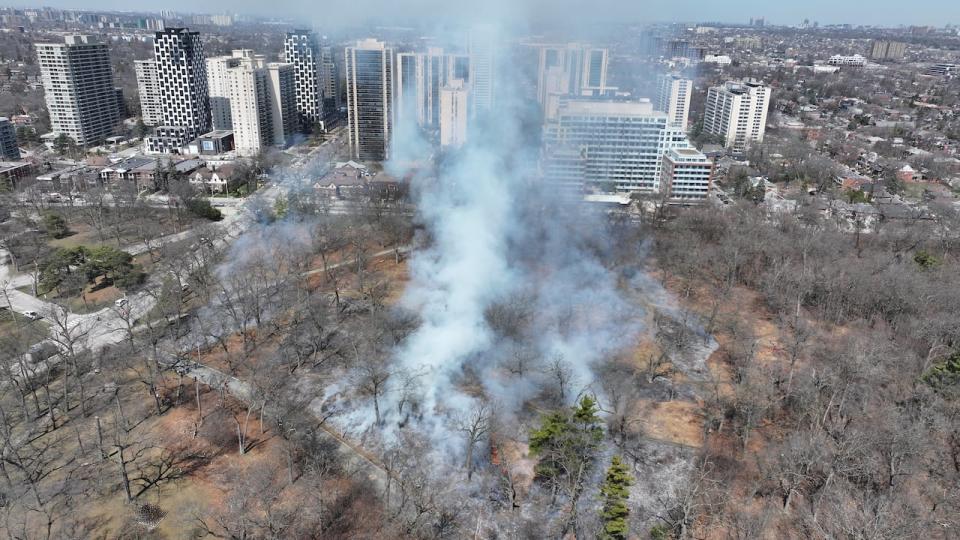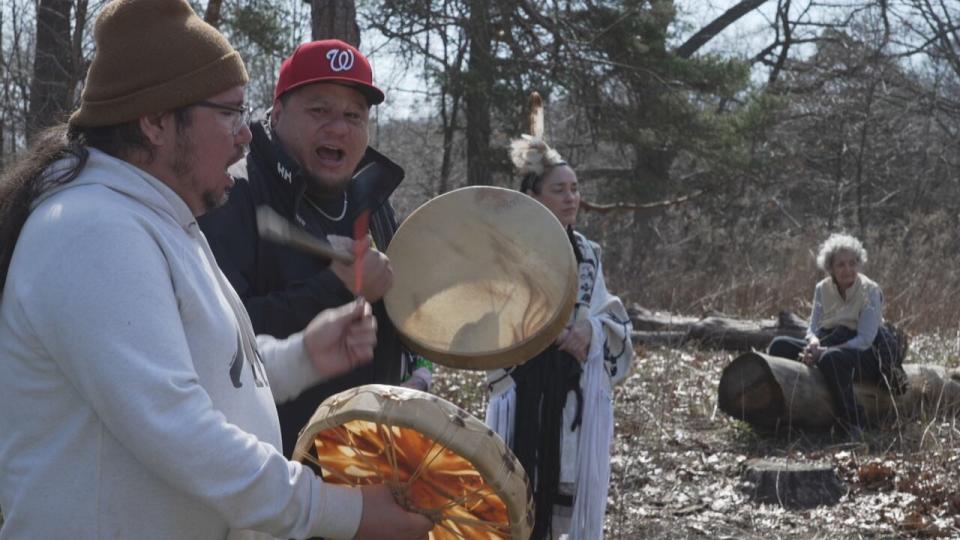Fire crews carry out 'traditional and prescribed' burn in High Park

Fire crews carried out a "traditional and prescribed" burn in High Park on Tuesday as part of the city's plan to protect the park's rare black oak savannah ecosystem.
On its website, the city says the burn is "a deliberately set and carefully controlled fire" that promotes growth.
"It burns low to the ground and consumes dried leaves, small twigs and grass stems but does not harm larger trees," the city says.
"Fire-dependent ecosystems, such as Toronto's rare Black Oak savannah, contain prairie plants that respond positively to burning, and that grow more vigorously than they would in the absence of fire."
Ray Vendrig, the city's manager of forest and natural area management, told a reporter that the burn itself is a teachable moment and a valuable experience for city staff and the public alike.
"It's a great opportunity to teach people not only about High Park and the ecosystem that we have here and how special it is, but also a good way for people to learn about the Indigenous connection to the land," he said.
Vendrig said the rare black oak savannah ecosystem in High Park is unique because it benefits from fire.
He said the fire creates conditions that favour the germination of acorns from the black oak trees and the germination of seed from the herbaceous plant material on the ground. The fire also slows down and kills invasive species.
City 'catching up' with burn in High Park
Vendrig said said the city conducted a traditional and prescribed burn last year but did not do so for the three years before that during the COVID-19 pandemic.
He said invasive species, which compete with the native plants, were given time to propagate because the burns were not conducted. He said the city has tried to burn in the same areas as last year to knock back the invasive species.
"There is a little bit of catching up to do," Vendrig said.

Smoke rises from High Park during the traditional and prescribed burn. (Patrick Morrell/CBC)
Before the burn, Indigenous Elder Vivian Recollet, whose spirit name is Bigasohn Kwe, led an opening ceremony and smudge. The ceremony included Indigenous singing, drumming and dancing.
"A long time ago, our people did these sacred burns on the territories so we could clear up the land," Recollet said on Tuesday.
"A long time ago, we used to do it to encourage new life to form, getting rid of all the old grasses, dead limbs and leaves. You basically clean up everything."
Recollet said Indigenous people got the opportunity to be included in the burn process after advocacy work by the city's Indigenous land stewardship circle, a collective of elders, knowledge holders and members of the urban Indigenous community who want to Indigenize and decolonize land restoration by healing the land through traditional approaches.
The land stewardship circle believes that the use of pesticides for dealing with invasive species is detrimental to the entire ecosystem that exists within the savannah.

Indigenous drummers and singers perform at an opening ceremony before the burn in High Park. (CBC)
Weather conditions excellent for burn, city says
According to the city, the weather conditions were excellent for the burn because it was dry, warm and sunny.
The city said on its website that the black oak savannah habitat is "extremely rare" and it estimates that less than three per cent of the original pre-settlement cover of prairie and oak savannah ecosystems remains in Ontario.
Black oak savannah remnants can be found in South Humber Park, Lambton Park and High Park. The city says High Park has the "most significant area of remnant prairie and savannah plant communities in the Toronto region."
The park, closed to public vehicles as of 7 a.m., was expected to reopen in the evening. The city restricted access to areas near burn sites during the event.


